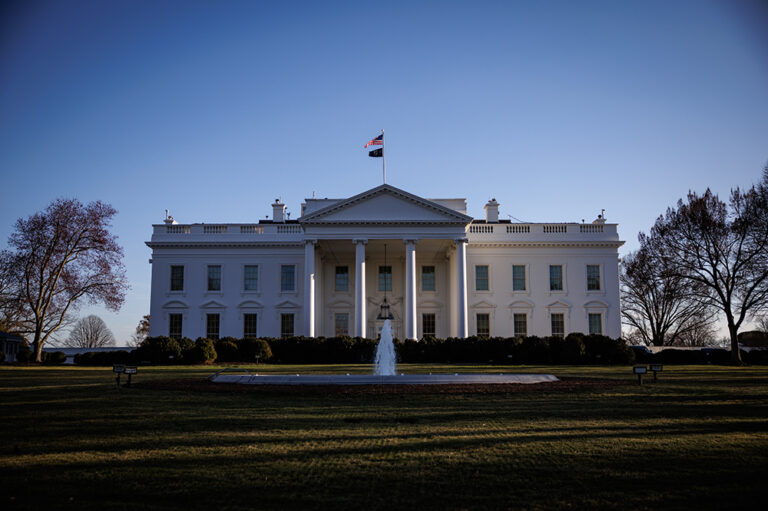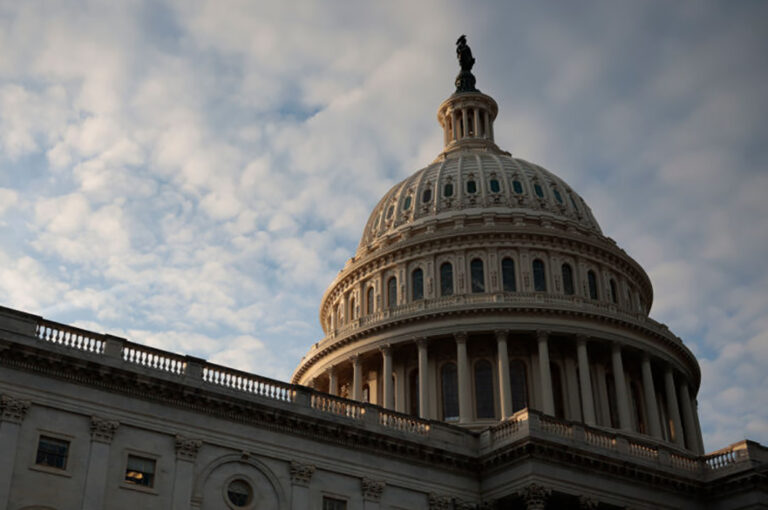The U.S. budget reflects lawmakers’ decisions to tax and spend, borrow and lend, and consume and invest. The size and scope of those decisions make the federal budget process one of the most important and complex exercises in public policy making. The formulation of the U.S. budget is an annual process that involves Congress, the President, and virtually all federal agencies. From start to finish, the process of formulating, legislating, executing, and auditing one annual budget involves many participants and lasts over a multi-year period.
Budget Cycle
The annual federal budget cycle consists of four stages: formulation, congressional action, execution, and audit. The executive and legislative branches play different, but complementary, roles in the process.
Formulation
The executive branch begins the process by planning the President’s budget, which is due on the first Monday in February. The planning for that budget begins about 10 months before that, approximately 18 months before the start of the fiscal year. To create the budget, each federal agency makes its own request to the Office of Management and Budget (OMB), which then compiles those requests into a single proposal.
The President’s budget provides Congress with recommended spending levels for agency programs, projects, and activities. Those requests may apply to annual funding through the appropriation process as well as changes to programs governed by permanent law (known as mandatory spending). The set of proposals is then submitted to the Congress for legislative action (which may or may not address the President’s priorities).
In practice, the President does not always meet the February submission deadline. The President also submits an updated budget before July 16 each year.
Congressional Action
The annual submission of the President’s budget is the beginning of the Congress’s role in the budget cycle. After the President’s budget is submitted, Congress starts working on the budget resolution, which serves as an outline for legislation in the budget year (and beyond). It sets topline spending and revenue levels, and communicates high-level priorities. The Congressional Budget Act sets a target date of April 15 for adoption of the budget resolution, although Congress typically adopts them late. In some years, Congress does not adopt a budget resolution; instead, it uses other tools such as deeming resolutions and statutory spending caps to establish enforceable spending levels.
After Congress establishes guidelines, those frameworks help to guide the appropriation process, which also begins shortly after the submission of the President’s budget. Appropriations provide funding for annual activities and make up about one-fourth of federal spending. The House and Senate are each responsible for developing annual appropriation measures through 12 regular appropriation bills that should be enacted by the start of the fiscal year on October 1. If Congress cannot pass some or all appropriation legislation by that time, it can enact a continuing resolution to avoid a government shutdown.
Congress may also address mandatory programs through authorization legislation, which could change the parameters of existing programs or create new ones.
Execution
Once Congress passes appropriation bills, the executive branch may spend its allotted amounts according to a multi-step process:
- “Budget authority” is enacted into law by appropriation legislation. Budget authority provides agencies with the legal basis to incur obligations.
- “Apportionment” occurs when OMB subdivides the budget authority made available to agencies.
- “Obligations” are incurred when agencies enter into legally binding commitments such as employing personnel or awarding contracts for the provision of goods or services.
- “Outlays” are payments made to fulfil such obligations.
Audit and Evaluation
After the fiscal year ends, the Government Accountability Office and each agency’s inspector general complete independent reviews and audits of agency programs. Such audits ensure that the obligations and outlays incurred throughout the year adhere to appropriations guidance. They also verify that a program’s performance goals were met.
Policy Options
Federal budget process reform can help encourage responsible budgeting and improve accountability.
Adding a Long-Term Focus
When lawmakers consider the budgetary impact of new legislation, they usually look at a 10-year window. That can obscure the longer-term effects of legislation, which could either improve or worsen the country’s fiscal outlook. Process reforms that require more information about the long-term budget impact could help lawmakers overcome the current, short-term focus. Some reforms include:
- Extending the time horizon for baseline budget projections and estimates of the budgetary effects of legislation to 25-30 years instead of 10 years.
- Requiring the Congressional Budget Office to evaluate the long-term impact of the President’s budget.
Setting Medium- and Long-Term Fiscal Targets
To encourage lawmakers to focus on improving the budget’s long-term outlook, the budget process could require Congress and the President to establish statutory medium- and long-term targets for the national debt, as the Peterson-Pew Commission on Budget Reform has recommended. Once an agreement is achieved, subsequent budgets from the President and congressional budget resolutions would also be required to include policies for reaching those targets and reporting on a regular basis about their progress toward achieving those goals.
Alternatively, policymakers could agree that the budget shortfall should be stable over the business cycle (that is, run larger deficits when the economy is weak, but reduce them significantly during stronger economic periods). If the total deficit grows more slowly than the economy, debt as a percentage of gross domestic product would decline over time.
Any targets should be set at levels that would be reasonably attainable and flexible enough to allow for unforeseen events, such as economic downturns, national emergencies, and major disasters.
Strengthening Budget Enforcement Provisions
Once policymakers reach an agreement about levels of revenues, spending, deficits and debt, they could use budget enforcement provisions to help keep fiscal policies on the agreed-upon path.
- Scale back budget exemptions. The existing pay-as-you-go (PAYGO) rules, which require any legislated changes to revenues and entitlement programs that increase deficits to be offset by changes to decrease deficits, could be strengthened by scaling back or eliminating the number of programs that are exempt from the PAYGO requirement and subsequent enforcement action through sequestration (across-the-board cuts).
- Limit discretionary spending. Statutory limits on discretionary spending — including both defense and non-defense spending — could be capped at realistic levels, based on, for example, historic trends.
- Enforceable debt targets. A new enforcement procedure to back up agreed-upon debt targets could be added. As a last resort, this reform could use sequestration — across-the-board cuts — to enforce debt goals to encourage lawmakers to adopt policy changes to meet the targets.
Additional U.S. Budget Resources:
- Congressional Research Service, Budget Process Reform: In Brief
- Committee for a Responsible Federal Budget, Budget Process Reform Options
- Bipartisan Policy Center, Fixing Fiscal Myopia
- American Enterprise Institute, Reforming the Budget Process
- The Brookings Institution, Reforming the Budget: How to Fix the Congressional Budget Process
- Committee for Economic Development, Reforming the Broken Federal Budget Process



